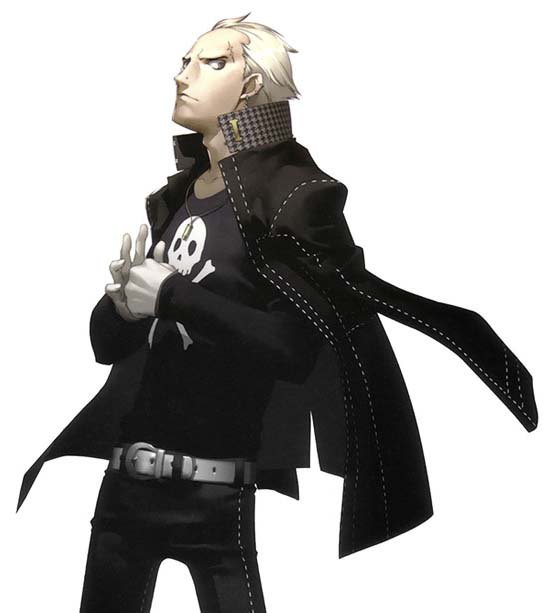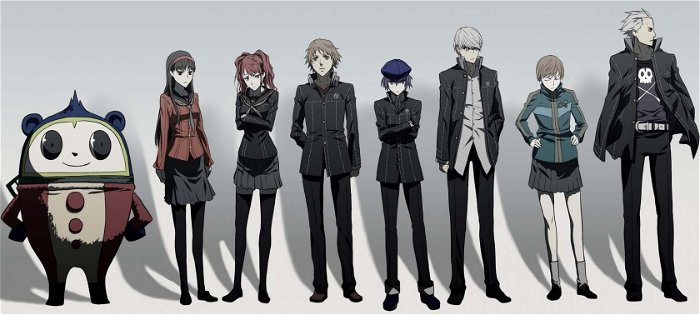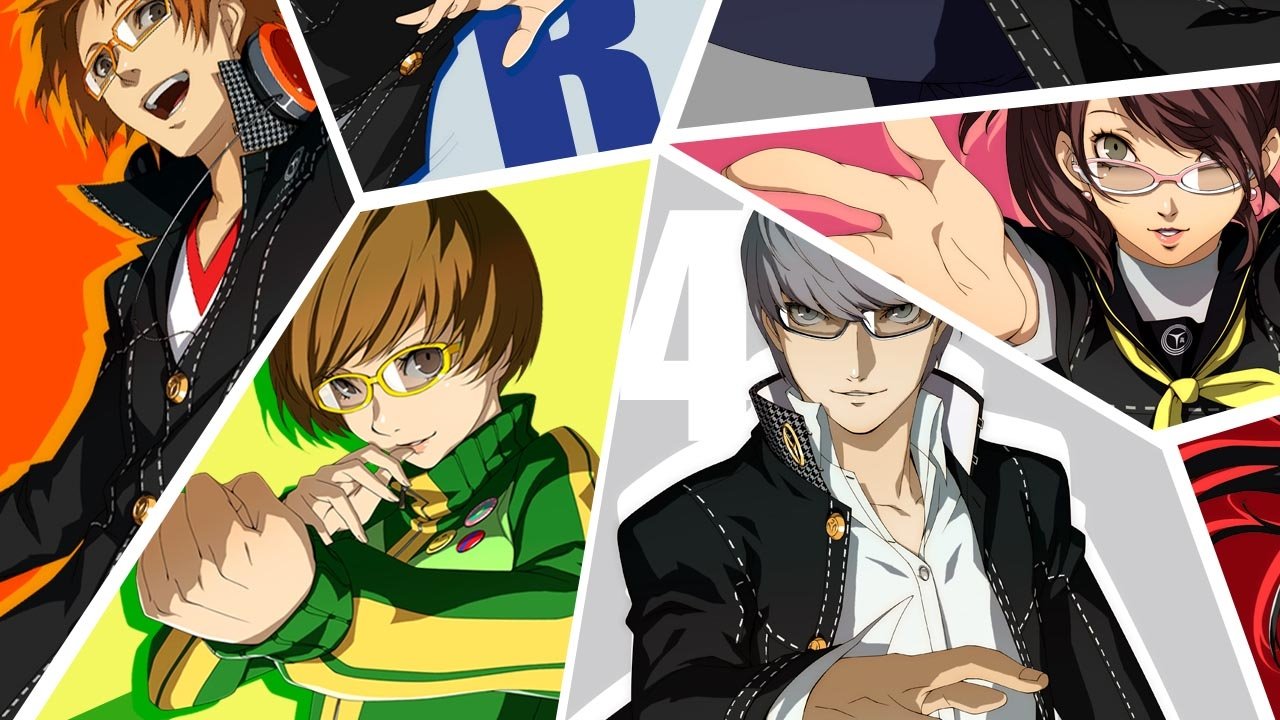This column discusses some of Persona 4‘s late game story beats and contains spoilers.
Videogames have a difficult relationship with social progress. Though the industry’s fringe has seen plenty of developers, critics and journalists looking to better tackle the key cultural issues of our time (war, gender, sexuality, etc.) the mainstream continues to barrel forward with often bland, sometimes offensive efforts (remember that bikini torso statue?) that leave the entire medium with a reputation for being socially backward. One of the most staunchly traditionalist of videogames genres is the Japanese RPG*, making it a bit surprising to see how Atlus’ Persona 4 (which is great on the Vita by the way) handles two of its main characters, Kanji Tatsumi and Naoto Shirogane.
 Kanji is of particular interest, his character arc describing a high school kid whose archetypically masculine biker punk exterior belies a sensitive, “feminine” inner self. When the Investigation Team enters the Midnight Channel in order to save Kanji, his Shadow self — the Jungian concept the Persona series uses to express the character traits its cast represses and fears — conjures a bathhouse landscape. Kanji’s Shadow is exaggeratedly effeminate and dressed in only a towel. Its boss fight manifestation is a giant buff dude, holding two male/Mars astrological symbols with a tender-looking Kanji swooning in place of a head. The two flexing bodybuilders on either side of the Shadow complete the homoerotic image that form Kanji’s deepest fears. After the battle (as in all of Persona 4‘s boss fights) Kanji accepts the hidden parts of himself and turns them into a persona that is, for all intents and purposes, a metaphor for self-actualization. All of this suggests the fluidity of gender/sexuality identity and the degree to which a young man, raised to regard his own failure to live up to strict cultural heteronormativity as a weakness, can work to construct a more socially acceptable identity.
Kanji is of particular interest, his character arc describing a high school kid whose archetypically masculine biker punk exterior belies a sensitive, “feminine” inner self. When the Investigation Team enters the Midnight Channel in order to save Kanji, his Shadow self — the Jungian concept the Persona series uses to express the character traits its cast represses and fears — conjures a bathhouse landscape. Kanji’s Shadow is exaggeratedly effeminate and dressed in only a towel. Its boss fight manifestation is a giant buff dude, holding two male/Mars astrological symbols with a tender-looking Kanji swooning in place of a head. The two flexing bodybuilders on either side of the Shadow complete the homoerotic image that form Kanji’s deepest fears. After the battle (as in all of Persona 4‘s boss fights) Kanji accepts the hidden parts of himself and turns them into a persona that is, for all intents and purposes, a metaphor for self-actualization. All of this suggests the fluidity of gender/sexuality identity and the degree to which a young man, raised to regard his own failure to live up to strict cultural heteronormativity as a weakness, can work to construct a more socially acceptable identity.
Naoto is similarly fascinating. She is introduced as a male detective, but is otherwise androgynous in both appearance and voice. Entering her Midnight Channel dungeon sees Naoto’s Shadow self obsessed with transforming her into a man through a scientific operation. After beating up the Shadow the player learns that Naoto has always yearned to be a man in order to fit in with the traditional image of the hard-boiled detectives she reveres. Her most repressed desires involve undergoing gender reassignment surgery.
To say that discussing gender and sexuality issues is abnormal in videogames is an enormous understatement.All of this is available through a surface reading of the game, Atlus clearly laying the characters’ cards on the table as the story is told. To say that discussing these kind of concepts is abnormal in videogames is an enormous understatement. This is all interesting material and the kind of subject matter that mainstream videogames typically shy away from. But while Persona 4 does a great job at portraying the complexity of two characters’ sexuality and gender identities, it falls back to tired, patriarchal tropes in other areas. The main character is, through no effort of my own, a consummate ladies’ man, women falling over themselves in pursuit of him. Progressing any of the female characters’ Social Links (spending time with people “levels up” the player’s ability to craft powerful Personas) involves a seemingly inevitable romantic option. My character spent time with action movie-obsessed Chie, a classmate and battle companion, in a completely platonic way throughout the game, making it a bit surprising when she turned red and prepared to confess her love for him. The same happened with the shy band girl (who looks as if she’s seven or eight years old), the spoiled, shopping-obsessed girl and Rise, the former celebrity who joins the party. I suppose this design choice is supposed to provide heterosexual male players with a potent power fantasy. If this is the case it seems like a bit of a shame.

After Naoto’s Shadow self is vanquished and accepted by the detective the game also does an abrupt about face on the topic of gender dysphoria. The character is suddenly referred to as “she,” his desire to live as a man thrown aside in a bafflingly callous way. The cross-dressing pageant that takes place partway through the game suddenly tells players to laugh at what was represented before as a serious issue as well. And during its many all-cast social outings, Persona 4 lumps Naoto in with the rest of the girls. This, too, feels like a wasted opportunity.
I’d rather a videogame waffle on its discussion of social issues than not attempt to bring them up at all, though. We need more games like Persona 4 to exist, but we also need them to have the courage to stick the landing on the points they raise.
* ” JRPG” is a term that I lambasted in a previous column, but will continue to use as shorthand because, well, at least people know what I mean when I write it in place of something like “traditional turn-based RPG.” JRPG is not perfect and using it makes me feel like a hypocrite, but sometimes clarity is important.




